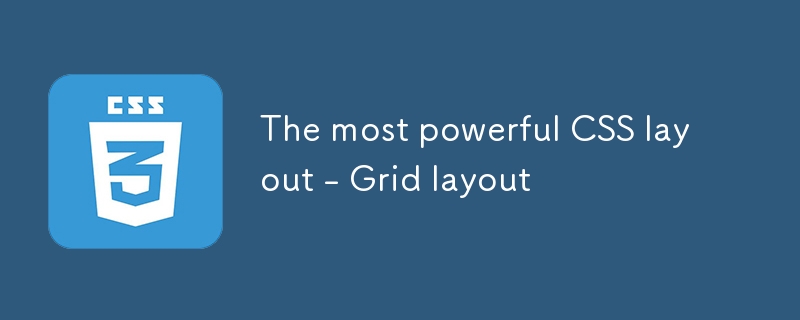
This article highlights the powerful features of grid layout in CSS and provides guidance on how to use it effectively. It emphasizes the flexibility, responsiveness, and simplicity of grid layout, making it an ideal choice for creating complex and r

Grid Layout: The Most Powerful CSS Layout
What Aspects of Grid Layout Make it So Powerful?
Grid layout offers several features that make it a powerful tool for web design:
How to Leverage Grid Layout for Responsive, Adaptive Interfaces
To fully utilize grid layout for responsive and adaptive interfaces, consider the following tips:
Best Practices for Implementing Grid Layout in Real-World Projects
When implementing grid layout in real-world projects, follow these best practices:
header, main, footer) to enhance accessibility and optimize search engine optimization (SEO).The above is the detailed content of The most powerful CSS layout - Grid layout. For more information, please follow other related articles on the PHP Chinese website!
 Windows cannot complete formatting hard disk solution
Windows cannot complete formatting hard disk solution
 Which one has faster reading speed, mongodb or redis?
Which one has faster reading speed, mongodb or redis?
 Check disk space in linux
Check disk space in linux
 Computer freeze screen stuck
Computer freeze screen stuck
 mysql paging
mysql paging
 The core technologies of the big data analysis system include
The core technologies of the big data analysis system include
 What are the international mailboxes?
What are the international mailboxes?
 What are the virtual currencies that may surge in 2024?
What are the virtual currencies that may surge in 2024?




